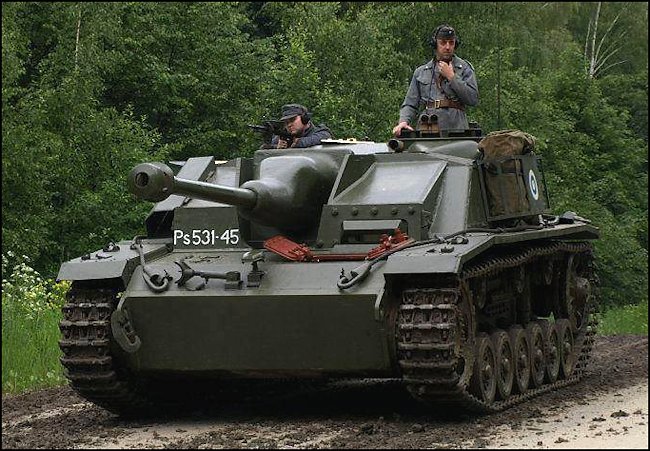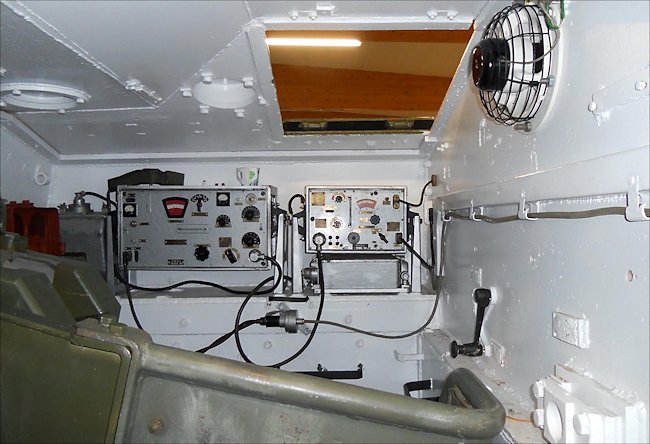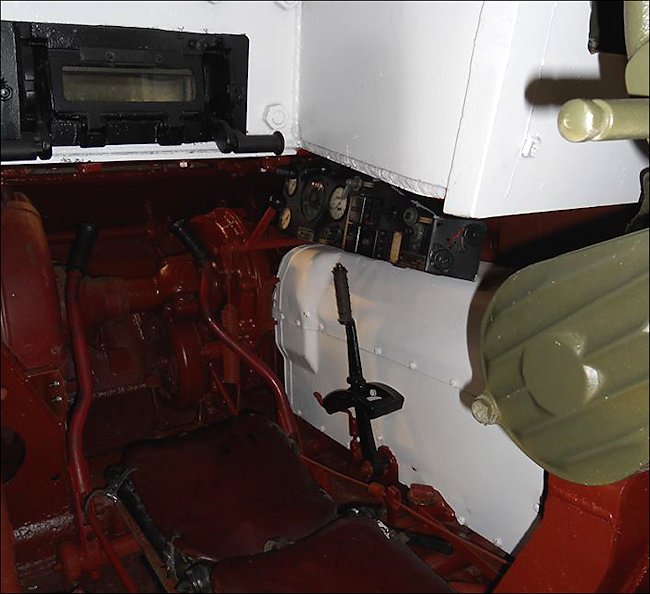Finnish Army StuG III 40 Ausf. G
This Finnish Army Sturmgeschütz 40 III Ausführung G Tank Destroyer with the long barrel 75 mm Stu.K. 40 L/48 main gun can be found at the Parola Tank Museum in Finland

Finnish Army StuG III Ausf. G Sturmgeschutz Tank Destroyer Sd.Kfz.142 at the Parola Tank Museum, Finland in post WW2 green. Joel Coupland is the commander with Jukka Jylha on the machine gun..
Location
This tank is on display at the Finnish Armour Museum, Panssarimuseo in Parola, Finland. The Museum is to the south west of the town. It is 143 km north of Helsinki roughly a 2 hour drive up the E12 motorway. Set your Satnav for Parola. Turn off at junction number 27 on the E12. It is sign posted Hattula and Parola. Do not turn right to Parola. Turn left and follow the sign marked Parolannummi on the 3051 road. A few kilometres down the road you will see on top of an embankment on your right, a black steam train and a row of armoured railway wagons with the Finnish swastikas painted on them. Turn right at the next road. That will take you to the museum entrance. Look for the brown tourist sign with the words 'Panssarimuseo Armour Museum' on it and the Sherman tank at the gate.
You can catch the train to Parola direct from Helsinki. It is only a 1.8km walk from the railway station or you can take the number 5 bus. Be careful if you decide to walk as there is no pavement for a good stretch of the route.

Finnish Army StuG III Ausf. G Sturmgeschutz Tank Destroyer Sd.Kfz.142 at the Parola Tank Museum, Finland (Photo - Joel Coupland)
Specifications
This StuG III was armed with a 75 mm StuK 40 L/48 gun that could fire AP armour piercing rounds and HE high explosive shells. It was also armed with a 7.92 mm MG34 Machine gun fixed to the roof. It had a four man crew: commander, gunner, loader and driver. They were protected by armour that ranged in thickness from 16 mm - 80mm.
It was powered by a Maybach HL 120 TRM V-12 petrol engine that produced 296 hp. It had a top road speed of 40 km/h (25 mph) and an operational range of 155 km (96 miles) before the crew needed to refuel. It weighed 23.9 tonnes before the concrete layer was added.

Finnish Army StuG III Ausf. G Sturmgeschutz Tank Destroyer Sd.Kfz.142 at the Parola Tank Museum, Finland (Photo - Joel Coupland)
The Finnish Army StuG III
In 1943 a thirty of these weapons were supplied by Germany to the Finnish Army to aid their struggle against the Russians. A further 29 were sent in 1944. The 1943 batch of StuG III Ausf G tank destroyers knocked out at least 87 Soviet tanks for a loss of only 8 StuGs some of which were destroyed by their crews to avoid capture due to mechanical brakedowns, lack of fuel or battlefield damage. The 1944 batch saw no real action. After the war, the StuGs were the main combat vehicles of the Finnish Army until the early 1960s. These StuGs were given the nickname 'Sturmi'
The Ausf G version of the StuG III was the final and by far the most common of the StuG series. Upper superstructure was widened: welded boxes on either sides were abandoned. This new superstructure design increased its height to 2160 mm. The back wall of the fighting compartment got straightened, and the ventilation fan on top of the superstructure was relocated to the back of the fighting compartment. From March 1943, the driver's periscope was abandoned. In February 1943, Alkett was joined by MIAG as a second manufacturer.
From May 1943, side hull spaced armour plates (Schurzen) were fitted to G models for added armour protection, particularly against Russian anti-tank rifles, but were also useful against hollow-charge ammunition. Side plates were retro-fitted to some Ausf. F/8 models, as they were be fitted to all front line StuGs and other tanks by June 1943 in preparation for the battle of Kursk. Mountings for the Schurzen proved inadequately strong, as many were lost in the field. From March 1944, an improved mounting was introduced; as a result, side skirts are seen more often with late model Ausf G. From May 1943, 80 mm thick plates were used for frontal armour instead of two plates of 50 mm + 30 mm.
However, a backlog of StuGs with completed 50 mm armour existed. For those, a 30 mm additional armour plate still had to be welded or bolted on, until October 1943. Between December 1942– April 1945 8423 Ausf G versions were produced: 142 were built on Panzer III Ausf. M chassis and 173 converted from Panzer III tanks
From November 1943, G versions were fitted with the 'Topfblende' pot mantlet (often called Saukopf "Pig's head") gun mantlet without a coaxial mount. This cast mantlet, which had an organic shape, was more effective at deflecting shots than the original boxy mantlet that had armour varying in thickness from 45 mm to 50 mm. The lack of large castings meant that the trapezoid-shape mantlet was also produced until the very end.
A coaxial machine gun was first added to boxy mantlets, from June 1944, and then to cast Topfblende, from October 1944, in the middle of 'Topfblende' mantlet production. With the addition of this coaxial machine gun, all StuGs carried two MG 34 machine guns from fall of 1944. Some previously completed StuGs with a boxy mantlet had a coaxial machine gun hole drilled to retrofit a coaxial machine gun; however, 'Topfblende' produced from Nov. 1943 - Oct. 1944 without a machine gun opening could not be tampered with. Also from Nov.1943, all-metal return rollers of a few different types were used due to lack of rubber supply.
If you look at the front of this Finnish Army StuG III you will notice the numbers and letters Ps531-45. Ps stands for the finnish word 'panssari' which means armour. Number 531 is the type number. 531 is the type code for the StuG III variants. As you probably guessed, last digits are a Finnish Army vehicle identification serial numbers.
Finland used StuG III tank destroyers until 1966 and after that some StuGs used as fixed weapons dug-in positions around airfields. They were retired from operational service in the late 1980s mainly because the old 75mm ammunition had become unstable and dangerous.
WW2 tank books

